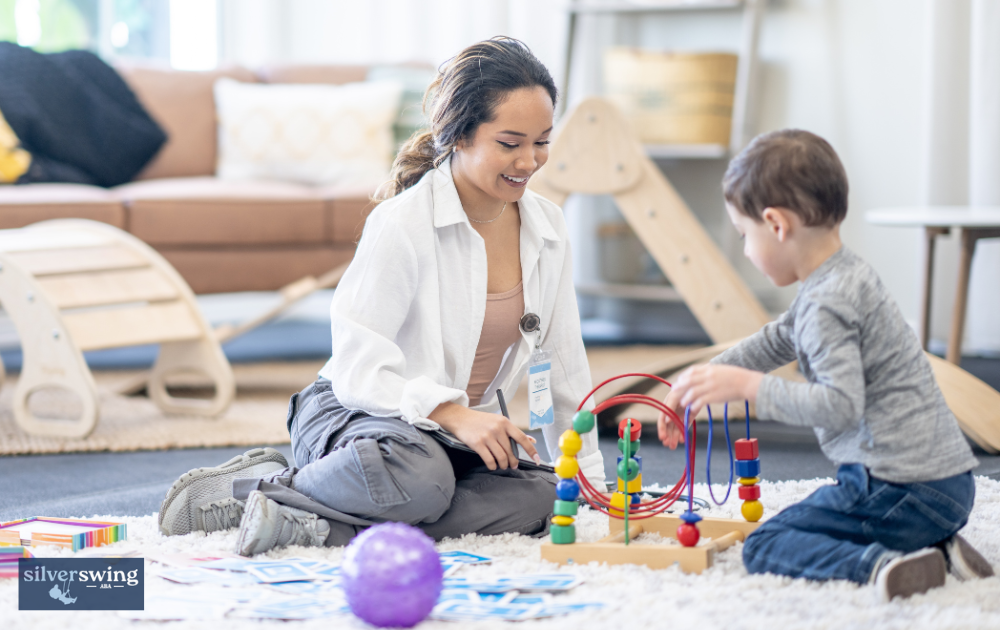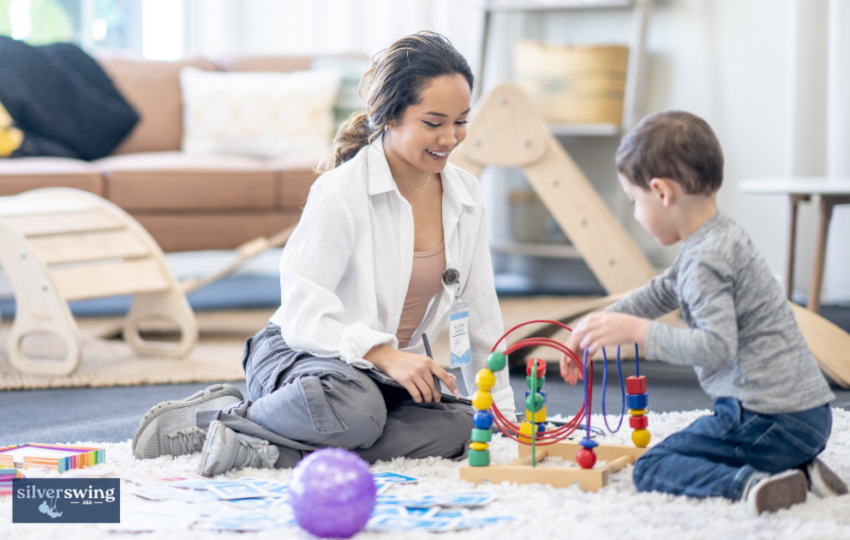If you’re considering ABA therapy, it’s important to have a clear understanding of what to expect during an ABA session. ABA, or Applied Behavior Analysis, is a therapeutic approach commonly used in the treatment of Autism Spectrum Disorder (ASD) and other behavioral disorders. In this post, we will explore the initial assessment and treatment plan, as well as the session duration and techniques utilized in ABA therapy.
Initial Assessment and Treatment Plan
The first step in ABA therapy is the initial assessment, conducted by a board-certified behavior analyst (BCBA). During this assessment, the BCBA will gather information about the individual’s behavior, strengths, and areas of improvement. The purpose of this assessment is to understand the unique needs and goals of the individual, which will then inform the development of a tailored treatment plan.
The treatment plan will outline the specific behaviors that will be targeted during the ABA sessions. It will also identify the strategies and techniques that will be used to address these behaviors. The BCBA will collaborate with the individual and their family to ensure that the treatment plan aligns with their goals and values. Building a rapport between the BCBA and the individual is an essential part of the initial phase, as it establishes a foundation of trust and enables effective therapy.

Session Duration and Techniques
The duration of ABA sessions can vary depending on the needs and goals of the individual. Sessions can range from one hour to several hours, with the frequency of sessions typically determined by the treatment plan. It’s important to note that the duration and frequency of sessions may change as progress is made and goals are achieved.
During ABA sessions, various techniques and strategies are employed to address specific behaviors. These techniques may include discrete trial training (DTT), which breaks down a skill into smaller, manageable steps, allowing for repeated practice and reinforcement. Natural environment training (NET) is another technique used in ABA therapy, where skills are taught and practiced in real-life settings to promote generalization and transferability.
The BCBA and the therapy team will continuously monitor the progress of the individual and make adjustments to the treatment plan as necessary. It’s important to remember that ABA therapy is an individualized approach, tailored to the unique needs of each person. By utilizing evidence-based techniques and strategies, ABA therapy aims to bring about positive and meaningful changes in behavior.
As a parent or caregiver, it’s crucial to actively participate in the ABA sessions and collaborate with the therapists. The involvement of parents in the therapy process is highly encouraged, as it allows for consistency and generalization of skills outside of the therapy setting. The BCBA will also provide training and support to parents or caregivers, equipping them with the necessary tools to maintain positive behaviors and address challenging behavioral issues.
Components of ABA Therapy
ABA therapy focuses on improving specific behaviors in individuals with autism. It is a systematic approach that utilizes evidence-based techniques to bring about positive changes in various areas of development. Two key components of ABA therapy are the focus on specific behaviors and the use of reinforcement strategies.
Focus on Specific Behaviors
One of the fundamental aspects of ABA therapy is the identification and targeting of specific behaviors for intervention. These behaviors can include social skills, communication, reading, academics, adaptive learning skills (such as fine motor skills, hygiene, grooming, and job competence), and more. The goal is to break down complex skills into smaller, achievable steps to facilitate learning and progress.
By focusing on specific behaviors, ABA therapists can design individualized treatment plans that address the unique needs of each individual. These plans are tailored to target the behaviors that require improvement and help individuals acquire new skills or replace maladaptive behaviors with more appropriate ones.

Reinforcement Strategies
Reinforcement is a key component of ABA therapy and plays a crucial role in shaping behavior. Positive and negative reinforcement strategies are utilized to encourage desired behaviors and discourage undesirable ones. Positive reinforcement involves providing rewards or incentives after the occurrence of a desired behavior, while negative reinforcement involves removing or avoiding something undesirable to reinforce a behavior.
Positive reinforcement can be in the form of verbal praise, tokens, treats, or other preferred items or activities. This type of reinforcement helps to strengthen the desired behavior and increase the likelihood of its repetition over time. Negative reinforcement, on the other hand, involves removing an aversive stimulus to reinforce a behavior. For example, removing an unpleasant sound after a desired behavior is exhibited.
It is important to note that reinforcement strategies should be tailored to the individual’s preferences and needs. What may serve as a reinforcer for one person may not have the same effect on another. ABA therapists work closely with individuals and their families to identify effective reinforcement strategies and ensure consistency across different environments, including the home.
It is crucial to maintain focus when applying ABA therapy at home and to have a general understanding of the principles and techniques involved. Patience, effort, and consistency are key factors in successfully implementing ABA therapy.

Parent Involvement s in ABA Therapy
Parents are essential partners in the ABA therapy journey. They have a unique understanding of their child’s needs, preferences, and behaviors, which can greatly contribute to the success of the therapy. When parents actively participate in ABA sessions, they can reinforce the strategies and techniques learned during therapy in the child’s everyday life.
By observing and learning from the behavior analysts and therapists, parents can gain valuable insights into the principles of ABA and how to apply them effectively. They can then implement these strategies during daily interactions with their child, helping to generalize the skills learned in therapy to real-life situations.
Parent involvement in ABA therapy also allows for continuous communication and collaboration with the therapists. Regular meetings and discussions provide an opportunity for parents to share their observations, concerns, and goals for their child’s progress. This shared knowledge and understanding help therapists tailor the treatment plan and make necessary adjustments to meet the child’s evolving needs.

ABA Therapy at Home
ABA therapy can be conducted at home, offering a valuable opportunity for individuals with autism to receive treatment in a familiar and comfortable environment. Conducting therapy sessions at home requires dedication and active participation from parents and caregivers. While it does not require extensive skills, general knowledge, time, effort, and patience are essential. In this section, we will explore the process of conducting ABA therapy at home and the focus and benefits it provides.
Conducting Therapy at Home
When conducting ABA therapy at home, it is important to work closely with a Board Certified Behavior Analyst (BCBA) or a qualified therapist. They will guide you through the process and provide you with the necessary tools and strategies to implement at home. ABA therapy at home involves breaking down specific behaviors and employing positive and negative reinforcement techniques to promote desired behaviors while reducing challenging ones.
To conduct therapy at home effectively, it’s important to create a structured and supportive environment. This includes setting up a designated space for therapy sessions and ensuring that distractions are minimized. Consistency and routine are vital, as they help individuals with autism feel secure and understand what is expected of them.
Throughout therapy sessions at home, parents and caregivers should closely observe and interact with their child. This allows them to reinforce skills learned during therapy and provide immediate positive reinforcement for appropriate behaviors. Communication and collaboration with the therapist are crucial to ensure that therapy goals and strategies are aligned between the home and therapy settings.

Collaboration with Therapists
Collaboration between parents and therapists is a fundamental aspect of ABA therapy. Working together as a team ensures the consistency and continuity of the child’s treatment across different environments. Therapists rely on parents to provide information and feedback about the child’s progress, challenges, and any changes in their behavior or circumstances.
Therapists can offer guidance, support, and training to parents on how to implement ABA strategies effectively outside of therapy sessions. They may provide specific techniques to manage challenging behaviors, reinforce positive behaviors, and promote generalization of skills learned in therapy to the child’s natural environment.
Regular communication between parents and therapists is key to maintaining a collaborative relationship. This includes sharing updates on the child’s progress, discussing any concerns or challenges, and seeking guidance when needed.
By actively participating in ABA sessions and collaborating with therapists, parents can create a supportive and consistent environment for their child’s progress. This active involvement helps to maximize the effectiveness of ABA therapy and promotes the generalization of skills into everyday life. Together, parents and therapists form a partnership to empower the child and facilitate their growth and development.




